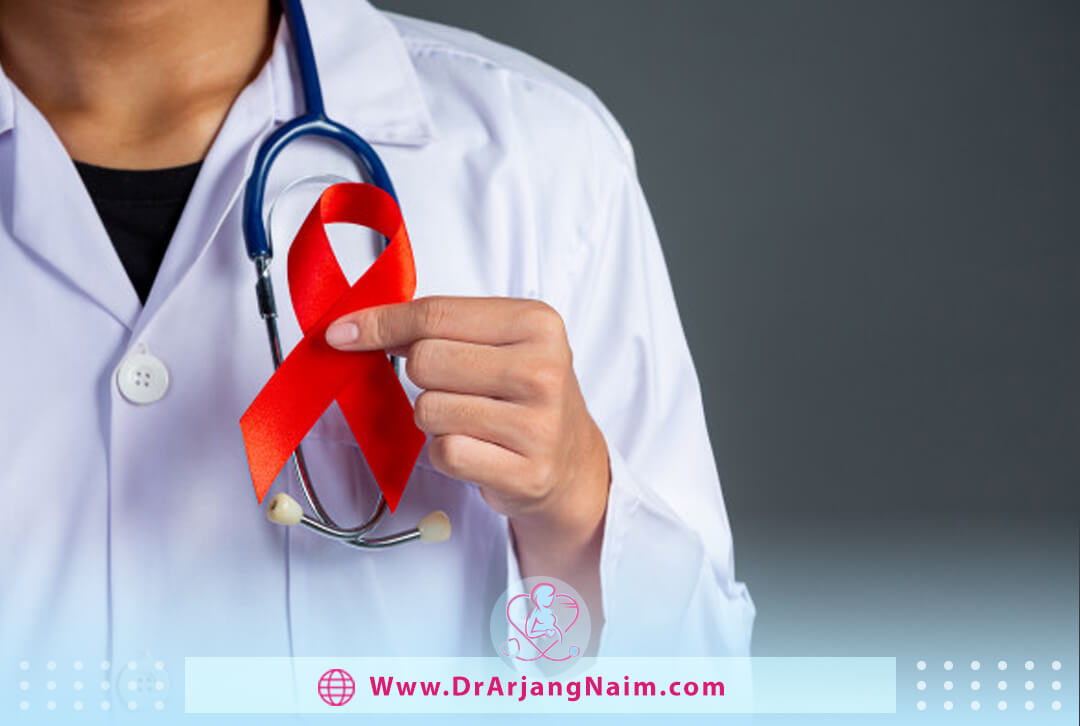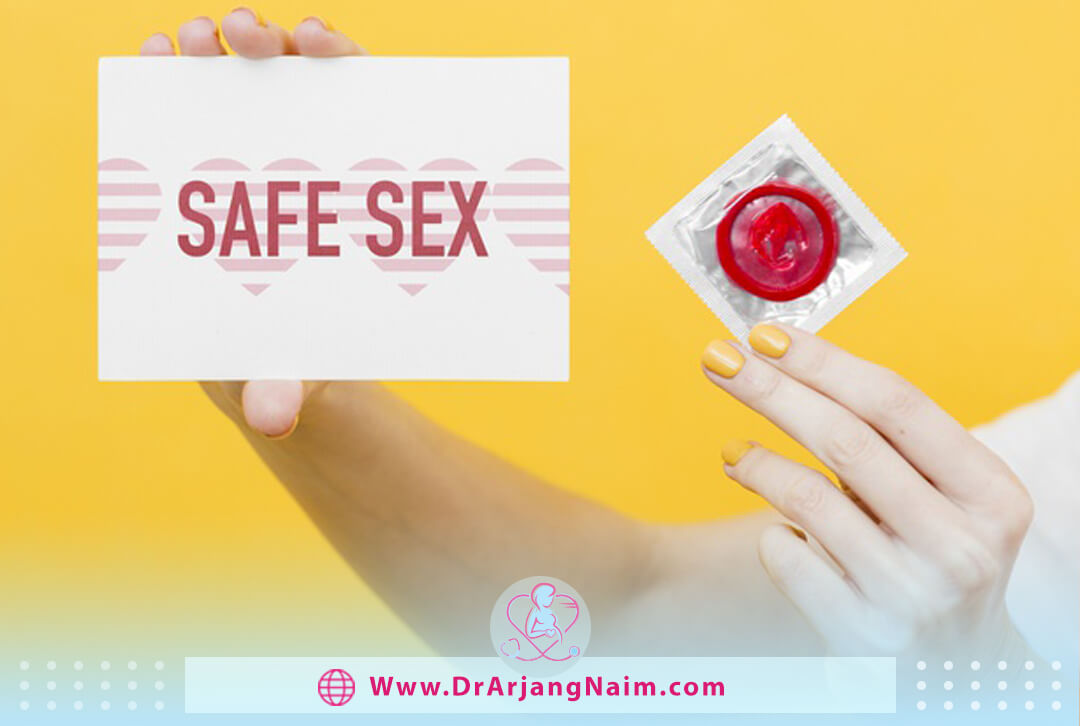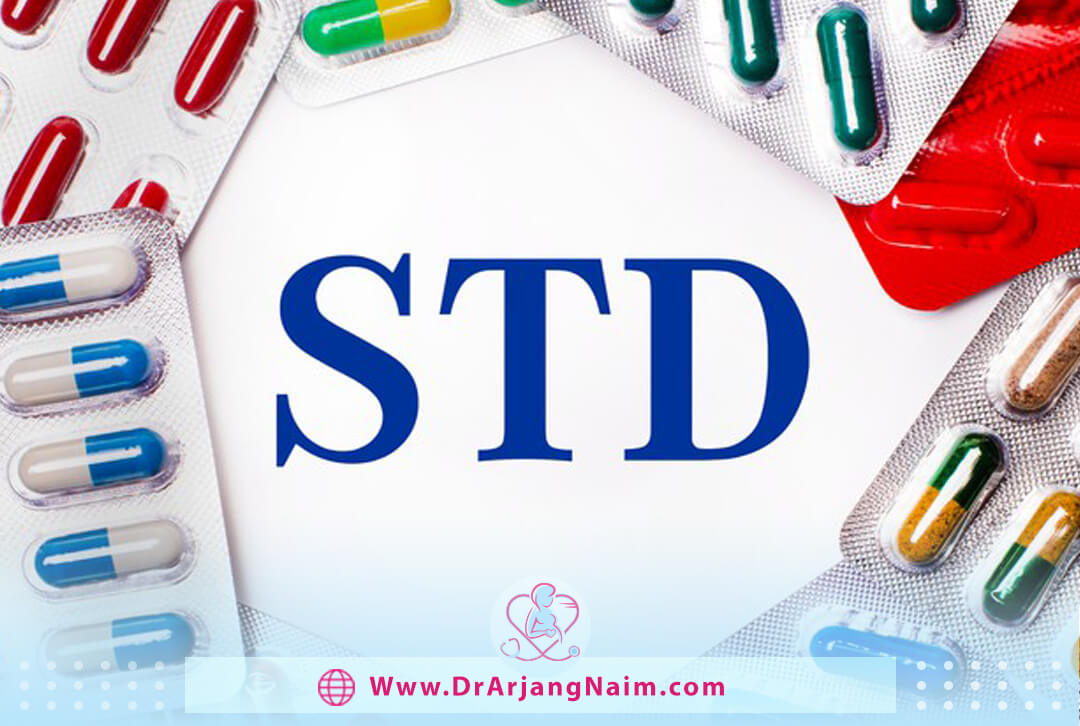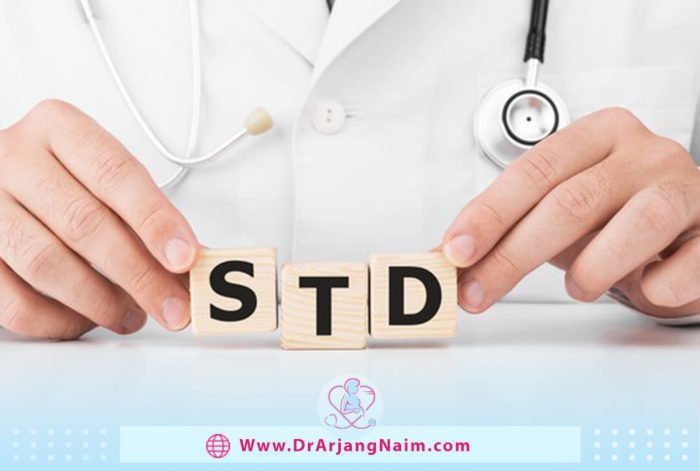Sexually Transmitted Diseases (STDs) or Sexually Transmitted Infections (STIs) are types of sexually transmitted diseases (oral, anal, or vaginal). Some STIs are benign, but others can lead to severe complications. Without treatment. Almost everyone is vulnerable to sexually transmitted diseases, and the lower a person’s immune system, the more likely they are to get these diseases. The use of devices such as condoms can reduce its risk, but there is still no safe and error-free way to prevent these diseases.
The symptoms of STDs are not always visible. The treatment of some types of sexually transmitted diseases is very simple, but the management of other diseases requires complete and accurate treatments. Keep in mind that if STDs are not treated, the risk of contracting other sexually transmitted diseases, such as HIV, will increase. Because these diseases stimulate the immune system in the genital area or the source of infection, thereby increasing HIV transmission. Some sexually transmitted diseases also cause infertility.
Symptoms in men
Some cases of STDs may be asymptomatic. But some STDs cause obvious symptoms. These symptoms in men include:
- Pain or discomfort during sex or urination
- Sores, bumps, or rashes on or around the penis, testicles, anus, buttocks, thighs, or mouth
- Unusual discharge or bleeding from the penis
- Painful or swollen testicles
Symptoms in women
In women, as in men, there may be no obvious symptoms of the disease in some cases. Symptoms generally include:
- Pain or discomfort during sex or urination
- Sores, bumps, or rashes on or around the vagina, anus, buttocks, thighs, or mouth
- Unusual discharge or bleeding from the vagina
- Itchiness in or around the vagina
Types of STDs
Different types of Sexually Transmitted Diseases can be transmitted sexually. In this article, we describe the most common types.
Chlamydia
Certain types of bacteria cause chlamydia. Many people with chlamydia do not have significant symptoms. Common symptoms include:
- Pain or discomfort during sex or urination
- Green or yellow discharge from the penis or vagina
- Pain in the lower abdomen
If left untreated, chlamydia can lead to:
- Infections of the urethra, prostate gland, or testicles
- Pelvic inflammatory disease
- Infertility
Sex without a condom and unprotected sex are the main ways of transmitting Chlamydia infection. Touching the genitals together can transmit bacteria. It can also be transmitted during anal sex. A mother can pass chlamydia to her baby at birth. Most prenatal tests include a chlamydia test, but re-examination with an OB-GYN at the first prenatal examination is safe.
The good news is that chlamydia is easy to treat. Because it is bacterial, it is treated with antibiotics.
HPV (human papillomavirus)

Human papillomavirus (HPV) is a virus that can be transmitted from person to person through intimate skin-to-skin contact or sex. There are several types of viruses, some of which are more dangerous. The most common symptom of HPV is warts on the genitals, throat, or mouth. Some types of HPV can cause cancer. These cancers include:
- Oral cancer
- Cervical cancer
- Vulvar cancer
- Penile cancer
- Rectal cancer
There is no specific treatment for HPV. However, HPV infections often go away on their own. Vaccines are also available to protect against the most dangerous strains, including HPV 16 and HPV 18. If a person has HPV, proper testing and screening can help their doctor assess and control the risk of complications.
Syphilis
Syphilis is a sexually transmitted disease (STD) caused by a bacterium called Treponema pallidum. The first sign of syphilis is a small, painless sore. The sore may be on the genitals, anus, or inside the mouth.
This is called a chancre, and most people do not notice it. Syphilis can be difficult to diagnose. People can carry the disease for years without any symptoms. The sooner the disease can be diagnosed, the better. If left untreated for a long time, it can cause major damage to organs such as the heart and brain.
Syphilis is transmitted only through direct contact with the chancre. The disease is not transmitted through shared toilets, dressing sick people, or eating in a shared container. The following symptoms of syphilis can include the following:
- Rash
- Fatigue
- Fever
- Headaches
- Joint pain
- Weight loss
- Hair loss
Fortunately, syphilis is easily treated with antibiotics if diagnosed early. However, syphilis infection in a newborn can be fatal. That is why syphilis screening is important for all pregnant women.
HIV
HIV can damage the immune system, increase the risk of contracting viruses or other bacteria, and cause some cancers. If left untreated, it can lead to stage 3 HIV, also known as AIDS. But with today’s treatment, many people living with HIV will never get AIDS. In the early or acute stages, the symptoms of HIV are confused with the symptoms of the flu. For example, early symptoms may include the following:
- Fever
- Chills
- Aches and pains
- Swollen lymph nodes
- Sore throat
- Headache
- Nausea
- Rashes
Early symptoms usually resolve within a month. Since then, a person can have HIV without having serious or persistent symptoms for years. There is still no cure for HIV, but treatment options are available to control it. Early treatment can help people living with HIV live as long as others.
roper treatment can also reduce the rate of HIV transmission to another person. To become infected with HIV, infected blood, semen, or vaginal discharge must enter another person’s body. This can happen in several ways, including:
- Having sex
- Sharing needles
- Blood transfusions
- During pregnancy or delivery or through breast-feeding
Gonorrhea
It is an infection caused by a sexually transmitted bacterium that infects both men and women. Gonorrhea often affects the urethra, rectum, or throat. In women, gonorrhea can also infect the cervix. Gonorrhea usually spreads during vaginal, oral, or anal sex. But babies of infected mothers can be infected during childbirth. Most types of gonorrhea are usually treated with antibiotics. In infants, gonorrhea usually affects the eye. Many people with gonorrhea have no symptoms. If symptoms occur, these include:
- Pain or discomfort during sex or urination
- More frequent urination than usual
- Itching around the genitals
- Sore throat
Following these steps can reduce the risk of gonorrhea, including:
- Use a condom
- Limit the number of sex partners
- Be sure you and your partner are tested for sexually transmitted infections
- Don’t have sex with someone who appears to have a sexually transmitted infection
- Consider regular gonorrhea screening
Pubic lice (crabs)
“Crab” is another name for pubic lice. They are tiny insects that can live on pubic hair. Like head lice and body lice, they feed on human blood. Common symptoms of pubic lice include:
- Itching around the genitals or anus
- Small pink or red bumps around the genitals or anus
- Low-grade fever
- Lack of energy
- Irritability
It may also be possible to see lice or tiny white eggs around the roots of pubic hair. If left untreated, pubic lice can be spread through skin-to-skin contact or shared clothing, bedding, or towels. Scratched bites can also be infected. It is best to treat pubic lice infection immediately.
Trichomoniasis
Trichomoniasis is a common sexually transmitted infection caused by a parasite. In women, trichomoniasis can cause foul-smelling discharge from the vagina, itchy genitals, and painful urination. Men with trichomoniasis usually have no symptoms. Pregnant women with trichomoniasis may be at higher risk for preterm birth.
Both partners should be treated to prevent re-infection with the organism that causes trichomoniasis. The most common treatment for trichomoniasis is taking one megadose of metronidazole (Flagyl) or tinidazole (Tindamax)..Using condoms correctly and every time you have sex will reduce your risk of infection.
Herpes
Herpes is the abbreviated name for herpes simplex virus (HSV). There are two main strains of the virus, HSV-1 and HSV-2. Both are sexually transmitted.
HSV-1 primarily causes oral herpes. However, HSV-1 can also be transmitted from one person’s mouth to another person’s genitals during oral sex. When this happens, HSV-1 can cause genital herpes.HSV-2 primarily causes genital herpes.
The most common symptom of herpes is blister sores. In the case of genital herpes, these sores form in or around the genital area. In oral herpes, they form on or around the mouth. Herpes sores usually flake off and heal within a few weeks. The first outbreak is usually the most painful. Outbreaks appear to be exacerbated during pregnancy and in children.
If a pregnant woman has herpes, she can pass it on to her fetus in the womb or to her newborn during childbirth. This so-called congenital herpes can be very dangerous for babies. This is why pregnant women need to be aware of HSV status. There is still no cure for herpes. But drugs are available to control the spread and relieve pain. The same drugs can also reduce the chance of transmitting herpes to a sexual partner.
Hepatitis B
Hepatitis B can cause a long-term infection that eventually leads to liver damage. Once a person is infected with the virus, it can remain in their semen, blood, and other body fluids. Hepatitis can be transmitted in the following ways:
- Engaging in sexual contact
- Using non-sterile equipment for injections
- Puncturing the skin with a sharp object where the virus is present
Many HBV infections occur in infancy or childhood. This is because the mother can pass HBV to her baby during delivery. However, doctors rarely diagnose HBV in childhood because it causes few apparent symptoms. A person with a chronic HBV infection may have persistent abdominal pain, fatigue, and joint pain episodes. There is currently no cure for HBV, but getting a vaccine can prevent primary infection, and antiviral drugs can treat chronic infections.
Risk factors for sexually transmitted diseases

Anyone sexually active is more likely to get a sexually transmitted disease (STD) or a sexually transmitted infection (STI). Factors that increase this risk include:
- Having unprotected sex: Penetration of the vagina or anus by an infected partner who does not use latex condoms significantly increases the risk of STIs. Improper or inappropriate use of condoms can also increase your risk.
- Having sexual contact with multiple partners: The more people you have sex with, the greater the risk. This is true for concurrent partners as well as consecutive monogamous relationships.
- Having a history of STIs: Having one STI makes it very easy to get another STI.
- Misuse of alcohol or recreational drugs: Substance abuse can affect proper functioning, thus increasing the likelihood of engaging in high-risk sexual behaviors.
- Injecting drugs: Drug injection by sharing needles can spread many serious infections, including HIV, hepatitis B, and hepatitis C.
- Being young: Half of STIs occur in people between the ages of 15 and 24.
Prevention of STDs
There are several ways to prevent or reduce the risk of STDs. Some of these methods include:
- Avoid high-risk sex
- Stay with one uninfected partner
- Avoid vaginal and anal intercourse unless both partners have an STI test
- Early vaccination before sexual exposure is also effective in preventing certain types of STIs
- Use condoms and dental dams consistently and correctly
- Don’t drink alcohol excessively or use drugs
- Consider male circumcision
- Talking to any new partners about protected sex and any past infections
Diagnosis of STDs
In most cases, doctors cannot diagnose a sexually transmitted disease based on symptoms alone. If your doctor or other health care provider suspects you have a disease, they may recommend tests. Depending on your sexual history, your healthcare provider may recommend an STD test even if there are no symptoms. This is because sexually transmitted diseases, in many cases, do not cause significant symptoms. But even asymptomatic sexually transmitted diseases can cause harm or be transmitted to other people.
Urologists can diagnose most sexually transmitted diseases using urine or blood tests. They may also take a sample of the genitals. If there are sores, they may also be sampled. Home test kits are also available for some STDs but may not always be reliable.
It is important to know that a Pap smear is not an STD test. Pap smear test for precancerous cells in the cervix. Although it may be associated with HPV testing, a negative Pap smear does not mean no sexually transmitted disease.
Treatment of sexually transmitted diseases

The recommended treatment for STDs varies depending on the type of STD. It is very important that both sexual partners are successfully treated for STDs before having sex. Otherwise, they can spread the infection to each other.
Bacterial STDs
Antibiotics can usually easily cure bacterial infections. All antibiotics must be taken as prescribed.
Viral STDs
Antibiotics cannot cure viral sexually transmitted diseases. While most viral infections have no cure, some can be treated on their own, and in many cases, treatment options are available to relieve symptoms and reduce the risk of transmission.
Other STDs
Viruses or bacteria do not cause some sexually transmitted diseases. Instead, they are created by other tiny organisms—diseases such as pubic lice, trichomoniasis, and scabies.
Sexually transmitted diseases and pregnancy
For pregnant women, STDs can be transmitted to the fetus during pregnancy or childbirth. In newborns, STDs can cause complications. In some cases, they can be life-threatening. To help prevent sexually transmitted diseases in newborns, doctors often encourage pregnant women to get tested for possible sexually transmitted diseases.
If one or more STDs test positive during pregnancy, the doctor may prescribe antibiotics, antiviral drugs, or other treatments. In some cases, obstetricians encourage pregnant women to give birth by cesarean section to reduce the risk of transmission during childbirth.
The bottom line
If the STD test is positive, getting treatment as soon as possible is important. If you have a sexually transmitted disease, it can often increase your chances of getting another disease. Some sexually transmitted diseases can also lead to severe consequences if left untreated. In rare cases, untreated diseases can even be fatal.
Fortunately, most sexually transmitted diseases are very treatable. In some cases, they are completely curable. In other cases, early and effective treatment can help relieve symptoms, reduce the risk of complications, and protect sexual partners. To take medications prescribed for sexually transmitted diseases, your doctor may advise you to adjust your sexual habits to protect yourself and others.
According to the patient’s condition, Dr. Arjang Naim, MD, examines the necessary tests for the possibility of contracting sexually transmitted diseases and, if necessary, prescribes treatments and strategies to reduce transmission to other people.
Additional questions
- What age is STD most common?
About half of these infections are in people between 15 and 24 years old. Young people are at higher risk for STDs for several reasons. Young women’s bodies are biologically more susceptible to sexually transmitted diseases.
2. What are the five signs of oral cancer?
- A lip or mouth sore that doesn’t heal.
- A white or reddish patch on the inside of your mouth
- Loose teeth
- A growth or lump inside your mouth
- Mouth pain
- Ear pain
- Difficult or painful swallowing
3. Is trichomoniasis considered an STD?
Trichomoniasis is a common but treatable sexually transmitted disease. Most infected people have no symptoms. This lack of symptoms makes the infection unknowingly transmitted to others.
4. What is the easiest STD to get?
Herpes is easy to catch. All it takes is skin-to-skin contact, including areas not covered by condoms.
5. What is Penile cancer?
Penile cancer is when cells grow out of control on or inside a man’s penis. It often starts in the skin cells and can work its way inside.
References
https://medlineplus.gov/sexuallytransmitteddiseases.html
https://www.healthline.com/health/sexually-transmitted-diseases
https://www.plannedparenthood.org/learn/stds-hiv-safer-sex
https://www.medicalnewstoday.com/articles/sexually-transmitted-diseases
https://www.webmd.com/sexual-conditions/sexual-health-stds




